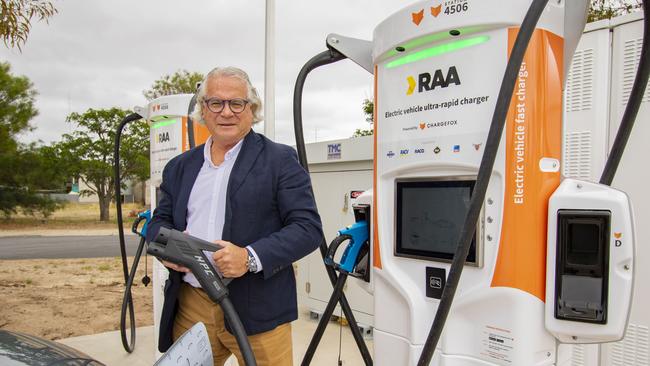Petrol prices about to drive these SA workers off the road
Surging fuel prices will lead more than half of SA drivers to leave their cars at home, new data says, as experts reveal which workers will be hardest hit.
SA News
Don't miss out on the headlines from SA News. Followed categories will be added to My News.
More than half of South Australian motorists say they will leave their cars at home if fuel prices keep rising and three in every four now rate the issue as their major financial concern.
Fifty six per cent of those surveyed by financial experts Savvy revealed they would “drive less” if the price of fuel continued to rise.
The option was the most common solution among SA Motorists and above the national average for motorists of 51 per cent.
Adelaide’s average fuel prices peaked in March at $2.20 a litre for unleaded petrol and the average price since has not been below $1.50 a litre, forcing some families to spend more than $160 a week.
The findings are in the Savvy report “Fuel, the Biggest Hit to Aussie Pockets”.
When South Australians were asked to nominate three budget items that were of most concern, 77 per cent surveyed said fuel costs, 59 per cent groceries, and 42 per cent utility bills.
Savvy chief executive Bill Tsouvalas said some motorists were hit harder than others, especially if driving was essential.
“Fuel price rises disproportionately disadvantage blue-collar workers over white-collar workers – particularly younger apprentices,’’ he said.
“Tradespeople and those who work outdoors are reliant on their ute or car to turn a profit or make their weekly wages.
“This will just add to the woes of the working class who are already feeling the brunt of rising grocery costs.”

In the Savvy survey, 16 per cent of South Australians are planning to use public transport more frequently as prices rise.
Forty seven per cent will look for discount outlets using apps, 29 per cent would not change their behaviour and seven per cent would carpool.
And the RAA has warned worse is yet to come, despite Saudi and US shale oil production now compensating for part of the lost Russian and Ukrainian production.
Fuel expert Mark Borlace said unleaded prices would reach $2.50 a litre because of the war.
He said the mark had only been avoided so far because of the Federal Government’s temporary cut in the 44.2c a litre fuel tax it collects.
In March, the federal government announced a halving of the tax, but only for six months because of the war.
“With fuel excise, we would be getting close to $2.50 a litre,’’ he said.
“Some relief will come from recommissioned oilfields which are now coming on line.”
Mr Borlace said retailers had been passing on the excise cut, saving motorists around $10 for every tank of fuel.
Lobby group Regions Matter spokeswoman Dianah Walter said fuel prices were very concerning for many regional South Australians who drive further than city dwellers and often use high fuel-consumption equipment in their work.
“It’s killing regions – no question,’’ she said.
“I’m certainly staying close to home and when needed meeting via Zoom to save time and money.”
Ms Walter said farmers and commercial fishers were suffering because of their high-volume fuel use.
Electric cars up to speed by 2026
They are jokingly referred to as Dysons after the famous vacuum cleaner brand, and many are also put off by the price tag, but small electric cars will soon reach pricing parity with petrol and diesel models.
RAA transport expert Mark Borlace said the motoring organisation predicted that by 2026 the high price of petrol and falling EV prices would merge, making the purchase a much more attractive proposition.
Mr Borlace said there had been a surge in EV buying before the Covid-19 pandemic disrupted global supply chains for manufacturers, but high fuel prices were allowing manufacturers to make up lost ground.
“It was getting a head of steam but there has been a lot of disruption and supply has been hampered,’’ he said.
Mr Borlace said the equation motorists needed for calculating if they were better off with an EV was complex and constantly changing, including access to fast charging stations.
He said although not free to run because of the high price of electricity, EVs operated about one third of the running costs of fossil fuelled cars.
“There are many factors like rising electricity prices,’’ he said. EV purchase prices continue to be a barrier. At the cheap end of the market, the MG ZS EV sells for $40,990. But the petrol-powered ZS Essence it is derived from sells for $26,490.
Mr Borlace said price pressures on established EV models would increasingly come from cheap Chinese brands importing to Australia.
“By late 2024 EV sales will take off in Australia,’’ he said.




